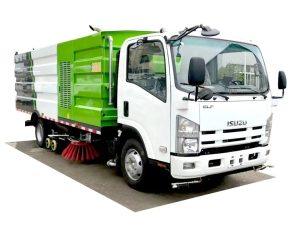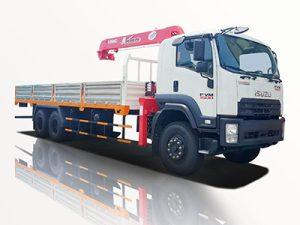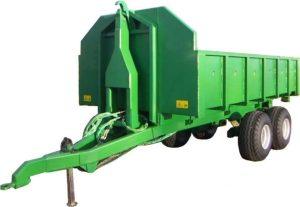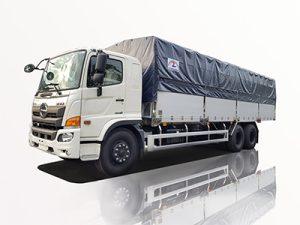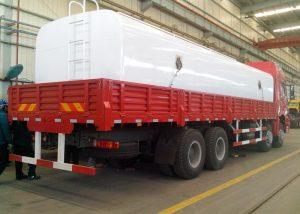Monday to Saturday - 8:00 -17:30
How Much Cement Can a Cement Truck Hold?
Cement trucks are essential vehicles in the construction industry, helping transport ready-mixed concrete to various sites. Understanding how much cement these trucks can hold is crucial for project planning and management. In this article, we will explore various aspects of cement trucks, including their capacity, types, and practical tips for using them effectively.
Understanding Cement Truck Capacity
The capacity of a cement truck varies based on its size and type. Generally, most cement trucks can hold between 8 to 12 cubic yards of concrete. However, some larger models can carry up to 14 cubic yards. The weight of cement as a solid and its mixed form also influences capacity.
Types of Cement Trucks
Understanding the types of cement trucks available can help you determine which one is best for your needs.
1. Standard Transit Mixers
Standard transit mixers are the most common type of cement truck used for transporting ready-mixed concrete. They typically have a capacity of 8 to 12 cubic yards. These trucks are equipped with a rotating drum that keeps the concrete mixed during transportation.
2. Concrete Pump Trucks
Concrete pump trucks not only transport concrete but also provide the capability to pump it directly to the desired location. These trucks often have a lower capacity, around 6 to 11 cubic yards, but their versatility makes them very popular on construction sites.
3. Front-Discharge Mixers
Front-discharge mixers are equipped with a discharge chute at the front, allowing better control over where the concrete lands. Their capacity is usually similar to standard mixers, ranging from 8 to 12 cubic yards.
Factors Influencing Cement Capacity
The capacity of a cement truck can be influenced by several factors, including:
- Truck Design: The overall design and build of the truck can impact its capacity.
- Cement Density: The type and density of cement can affect how much can fit into the truck.
- Local Regulations: Some regions have laws governing the maximum load a vehicle can carry, which may limit the truck’s capacity.
Calculating the Amount of Cement Needed
Knowing how much cement a truck can hold is essential for accurate project estimates. Here’s a simple formula to help you calculate the amount of cement you will need based on the area you plan to cover:
1. Measuring Your Area
First, measure the length, width, and depth (in feet) of the area you want to fill with concrete.
2. Calculation Formula
The volume can be calculated using the formula:
Volume (cubic feet) = Length × Width × Depth
3. Converting to Cubic Yards
Since cement trucks measure concrete in cubic yards, convert cubic feet to cubic yards using this formula:
Cubic Yards = Volume (cubic feet) ÷ 27
Load Weight of Cement Trucks
The weight of cement also plays a critical role, especially when considering the truck’s load limit. Wet concrete weighs approximately 4,000 pounds per cubic yard, translating to a weight of about 120 pounds per cubic foot.
Calculating the Load Weight
To determine how much weight your cement truck is carrying, use the following formula:
Weight (pounds) = Volume (cubic yards) × 4,000
Examples
Here’s a practical example:
If you require 10 cubic yards of concrete, the total weight would be:
Weight = 10 × 4,000 = 40,000 pounds
Best Practices for Using Cement Trucks
To optimize your use of cement trucks, consider the following best practices:
1. Schedule Deliveries Wisely
Plan the timing of your deliveries to minimize downtime and ensure that the concrete is used while it is still fresh.
2. Site Preparation
Have the site prepared and ready for pouring before the truck arrives to maximize efficiency.
3. Communication with the Driver
Maintain clear communication with the truck driver to ensure that they know exactly where you need the concrete and any special requirements for the pour.
4. Monitor Weather Conditions
Weather can significantly affect the quality of concrete. Avoid scheduling deliveries during adverse weather conditions.
Cost Considerations of Cement Truck Deliveries
The cost of using a cement truck can vary widely based on several factors, including:
1. Location
Prices can differ based on the region due to local demand and supply dynamics.
2. Quantity Ordered
Most companies offer discounts for larger orders, so ordering in bulk might save you money.
3. Additional Fees
Check for additional fees related to delivery or special equipment required for your site.
Environmental Considerations
As the construction industry grows, so does the need for environmentally friendly practices. Here are some tips to make the use of cement trucks greener:
1. Efficient Routing
To reduce fuel consumption, plan the most efficient routes for cement truck deliveries.
2. Consider Recycled Materials
Using recycled concrete aggregates can reduce the environmental footprint of your project.
3. Reduce Waste
Carefully calculate the needed amount of cement to minimize waste during delivery and pouring.
Frequently Asked Questions (FAQ)
1. How much does a cement truck weigh?
A fully loaded cement truck can weigh between 30,000 to 40,000 pounds, depending on its capacity and the amount of concrete it is carrying.
2. Can I rent a cement truck?
Yes, many companies offer rental services for cement trucks. Be sure to check for availability and pricing in your area.
3. How long does concrete last once poured?
Concrete typically cures for about 28 days but will reach a significant strength (approximately 70%) within the first week.
4. What is the difference between cement and concrete?
Cement is a binding agent, while concrete is a mixture of cement, aggregates (like sand and gravel), and water.
5. How can I prevent segregation of concrete during transport?
Ensure the proper mixing ratio and use a well-maintained cement truck to minimize segregation.
6. What should I do if I don’t need all the cement delivered?
Consult with your delivery service in advance to adjust the quantity before delivery if possible, or ensure appropriate measures are taken to store excess concrete safely.




